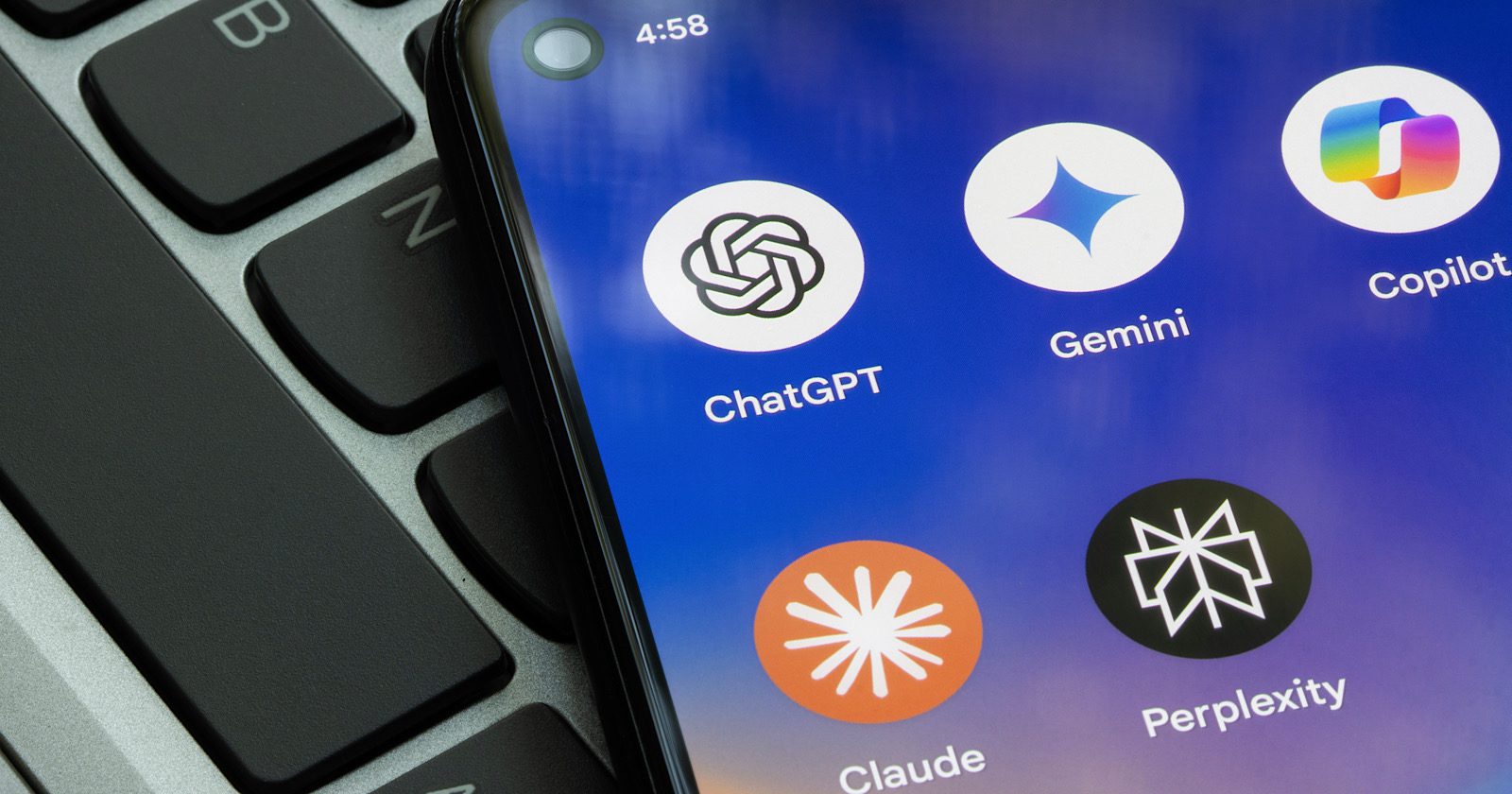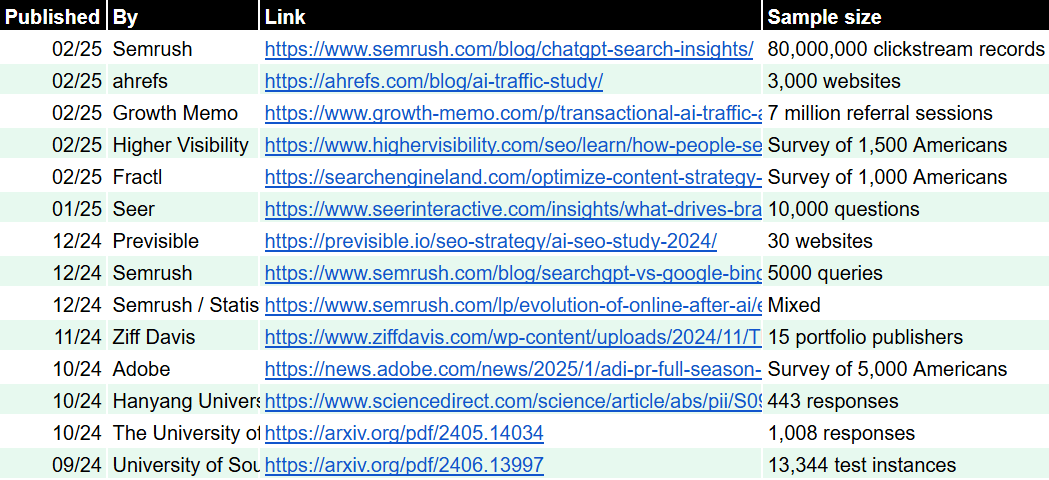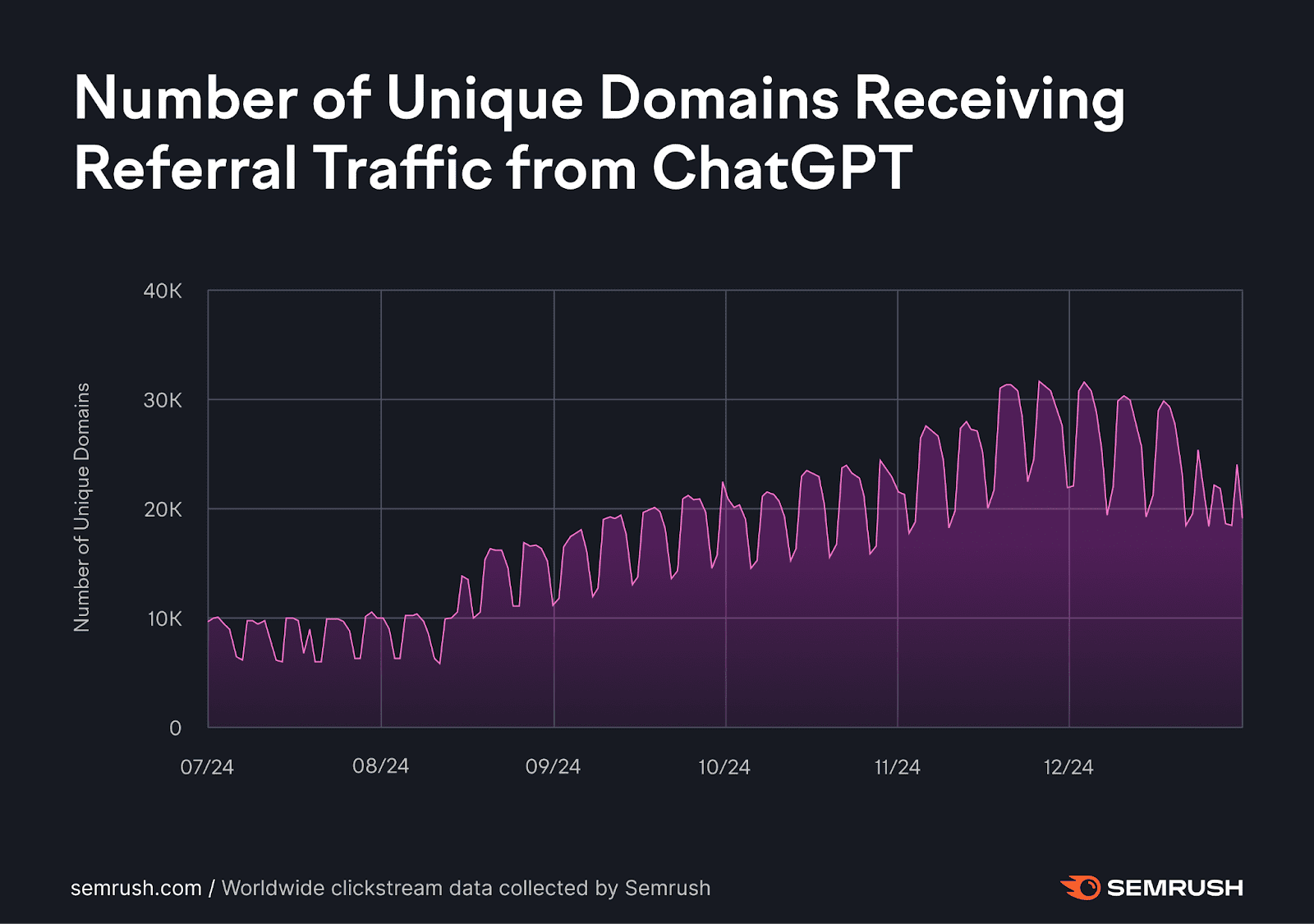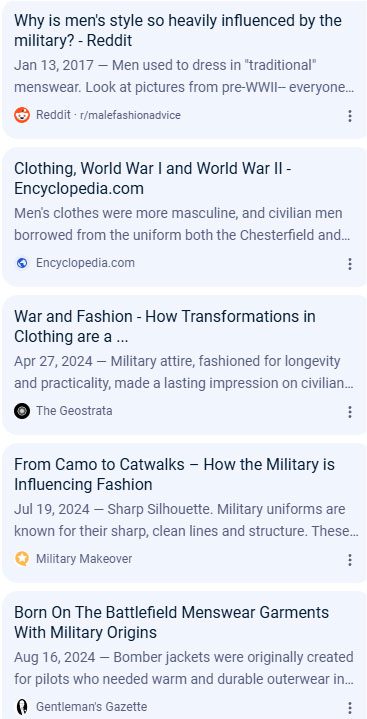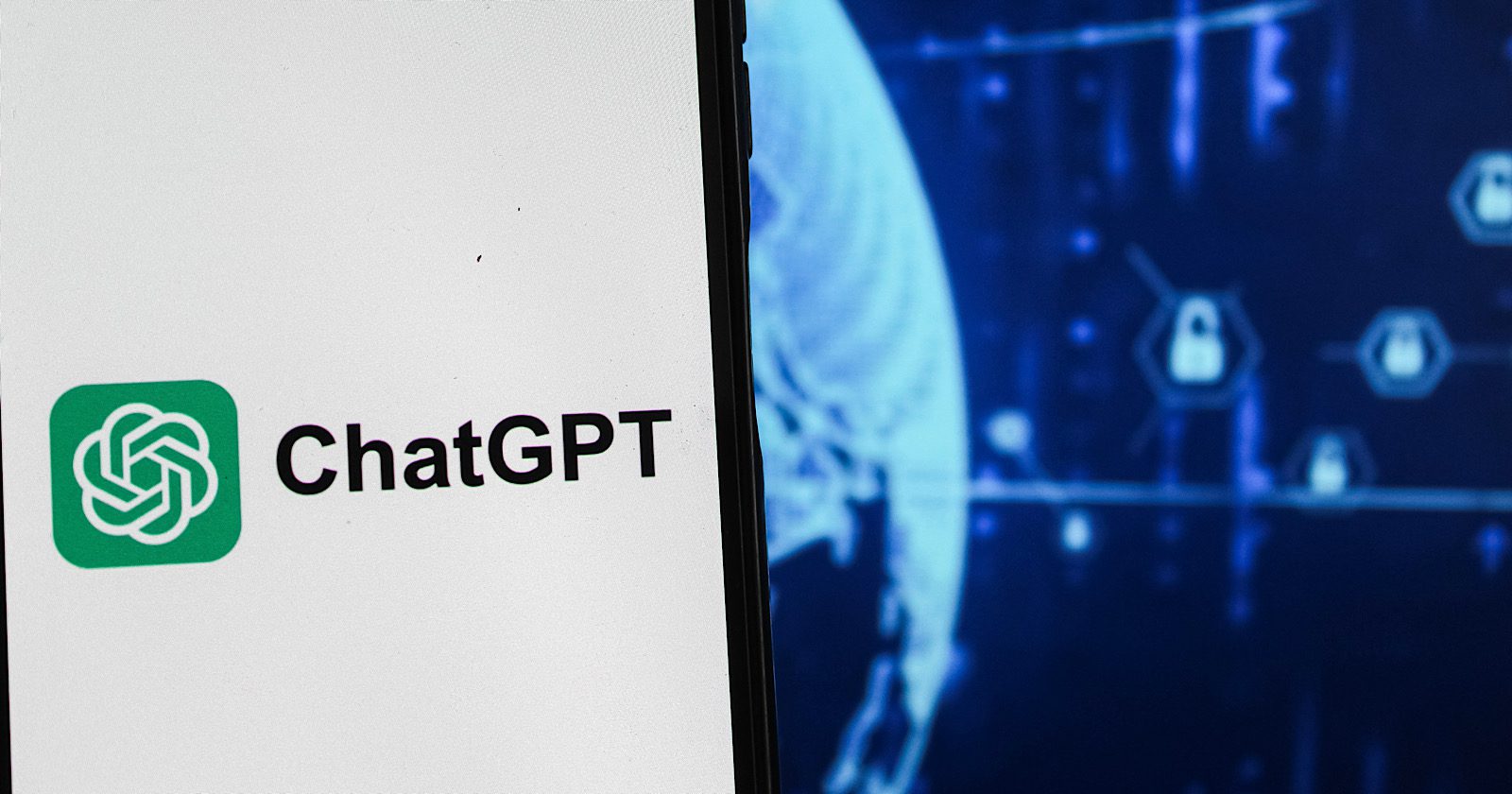We’re officially entering a new era: the content overload era.
Content is no longer seen as a nice to have but a must for the majority of businesses.
The sheer volume of content being created and published daily across the web is astounding, to say the least – WordPress alone sees about 70 million new posts each month.
Knowing this could send content marketers into a frenzy, scrambling to crank out more content to keep up with demand. But quantity alone isn’t the only marker for content success.
The content overload era has done more than just spark the need for more; it prompted a reliance on tools and technology.
One such tool that has made its way into nearly every content marketer’s toolkit is artificial intelligence (AI). Its ability to streamline mundane processes quickly and with minimal effort has made it a crowd favorite for many content marketing professionals.
As more content marketers turn to AI to help with the content brainstorming, development, and distribution process, it raises one poignant question: Are we sacrificing quality for speed?
While unclear at first, it’s now more evident than ever that AI is here to stay and holds the potential to become an ally for content marketers when used right – a tool used for support rather than as a standalone solution.
In this post, we’ll explore how to amplify your content marketing efforts the right way, strengthening your trust with your audience.
You’ll learn how to cut through the noise to reach your target audience amid emerging tools, tactics, and technology.
You’ll walk away feeling confident in how to effectively reach and engage with your audience without relying solely on AI for your content marketing efforts.
Understanding The Challenges Of Content Saturation
Every second of the day, an influx of content is published across myriad platforms such as email, social media, websites, and more.
Consumers are inundated with content, having to sift through the mountains of information to find what is most relevant to their needs.
Vying for their time and attention can be difficult, especially when your competitors, and even those in different verticals, are attempting to do the same.
The rise of AI technology presents another challenge. Some content marketers and businesses are turning to AI to draft and publish content quickly.
Given its accessibility and capabilities, AI is becoming an easy way to churn out content, although a study has pointed to decreases in search engine visibility with AI-generated content.
The consistent, steady stream of content options can lead to what many refer to as “information overload,” where consumers become overwhelmed with the endless content options at their fingertips.
Information overload makes it increasingly difficult for brands to stand out. Additionally, algorithms are becoming attuned to understanding consumer preferences, surfacing, and prioritizing content based on relevance and engagement.
Generic content marketing strategies no longer suffice. Smart and savvy strategies are required in the ultra-fierce race for audience attention.
Breaking Through The Noise: Strategies That Work To Build Trust
Content isn’t being served in one single location. Long gone are the days of direct mail, email, and blogs being the main content forces to reckon with. The battle for attention is more arduous than ever.
With the emergence of social media platforms like TikTok, Instagram, and YouTube, content creation is no longer just in written form but rather through captivating photos, audio, and video formats.
Innovative content marketing approaches are necessary to truly build trust and differentiate your content from others.
Hyper-targeted content, personalization, and strategic AI usage are among those approaches that lead to the path to content marketing mastery.
1. Hyper-Targeted Content: Reaching The Right Audience
Imagine shouting into a void, one so massive and wide-reaching that your voice barely penetrates the surface.
The effort exerted to scream your message wouldn’t be worthwhile as no one would hear a word you say. Unfortunately, this example is all too common in the world of digital marketing.
Despite the most earnest efforts, marketers don’t effectively reach their audience due to poor segmentation or not understanding the audience at a granular level.
By analyzing key data points – like demographic, psychographic, and behavior data – brands can tap into what motivates their target audience most.
Content can then be delivered more effectively to the right audience at the right time with the right message.
Tools like Google Analytics, Google Business Profile, and email and social media marketing platforms are becoming more intelligent, enabling businesses to gain a deeper understanding of their audience through deeper insights.
These insights may reveal the best time of day to send a message, what locations are receiving the most traffic, the top-performing email nurture sequence to send new customers, and much more.
Takeaway: Craft Content Tailored To Niche Interests
Generic content no longer works. Instead, successful content marketers focus on niche markets, delivering highly relevant content that addresses a specific pain point.
For example, a popular pet retailer offers numerous specialty services to their customers. Bundling all this information on one landing page can cause confusion, leading to lower click-through rates and, in turn, less revenue.
By adding specialty landing pages with unique content for each of their services offered, such as vaccinations, aquatics, grooming, and more, the pet retailer saw dramatic increases in organic search traffic.
Understanding your audience is imperative, and content must match the needs of the individual.
Additionally, this level of segmentation can help customers build trust with your business, perceiving you as a trusted resource that truly understands their needs.
They no longer feel like just another email contact on your massive send list.
Hyper-targeted content requires more than cranking out AI-generated content. It requires human oversight to ensure segmentation is correct, the message isn’t generic, and your content matches the audience’s unique needs.
AI can be great for helping you brainstorm content ideas for your niche audience; however, a human copywriter is necessary to truly get the message over the line.
2. Effective Use Of Personalization
Addressing a prospect by their first name isn’t personalization.
Content personalization extends far beyond simply knowing the names of your customers. Modern content consumers expect more out of businesses in order to trust them enough to purchase.
They expect content that aligns with their unique needs, such as surfacing previously frequent purchases or highlighting a book that’s similar in style to the last book a customer read.
Customers are savvy, and if they’re presented with options that don’t align with their preferences, they’ll look elsewhere.
Think of Amazon, for example. Amazon’s algorithms are intelligent enough to highlight a product within a certain time period based on the buyer’s purchase history.
For example, a customer might buy Vitamin D supplements every three months. Amazon will likely show this product to the consumer around the time a refill is needed, streamlining and optimizing the path to purchase.
Revenue can be strongly tied to personalization. A HubSpot report found that segmented emails can boost opens by 30% and click-throughs by 50%, highlighting the value of personalization.
Takeaway: Personalization – A Powerful Differentiator That Requires Balance
Personalization walks a fine line. It shows you care about your customers by sharing more relevant content that matches their needs; however, privacy must be considered.
Algorithms are becoming more intelligent by analyzing and refining their content distribution strategies. This requires customer data, a subject that breeds concern and calls ethics into question.
It’s crucial for businesses to share how, when, and where customer data is collected. Disclose this clearly on your website and in your content in a clearly visible and easy-to-locate location.
Transparency is key to winning trust and credibility.
3. Responsible AI Usage In Content Creation
Many marketers have jumped aboard the AI bandwagon – 64% are already using it. Despite its prominent adoption, AI is seen as both a blessing and a curse.
On one hand, it has significantly impacted the way we work, streamlining tasks and delivering quick results.
On the other, it leads to duplicated content, information bias, irrelevant content, and an abundance of content that all sounds the same.
In fact, over half (60%) are concerned AI will harm their brand’s reputation through bias, plagiarism, or misalignment with brand values.
AI, when used responsibly, can enhance content marketing. However, the tool itself can’t mitigate concerns associated with its usage for content marketing specifically.
Only humans hold the power to truly transform the content experience and eliminate the over-reliance on AI for content creation.
Use cases for AI for content marketers:
- Data analysis.
- Improving drafts.
- Keyword research.
- Content optimization.
- Technical SEO fixes.
- Grammar and clarity.
- Outline creation.
Takeaway: Use AI To Complement Human Efforts
Relying solely on AI for content creation comes with inherent risks.
AI-generated content often lacks authenticity and loses the author’s unique tone of voice. It can sound the same, reading too crisp and polished.
It loses the human element – interjecting the emotion and spark human writers accomplish that AI simply can’t.
Successful brands recognize AI can enhance human creativity, but it is not meant as a replacement.
Human ingenuity helps to build trust and shines your business in a more positive light.
Integrating All 3 Strategies For Maximum Impact
Content marketing strategies work best when used in tandem.
For example, a retailer might use AI to extract common themes in customer feedback, hyper-targeted content to promote relevant content based on customer feedback within a specific region, and personalize outreach with product recommendations based on the buyer’s behavior.
This all-encompassing approach not only improves customer experience but holds the potential to improve return on investment (ROI) as well.
As with any marketing strategy, measurement is a must. Keep a pulse on your wins as well as your opportunities for enhancement.
A firm understanding of metrics such as click-through rates, conversion rates, and engagement metrics across all platforms helps you spot what’s working and what isn’t.
The dual content overload and AI era has just begun, and the way content marketers used to reach customers will no longer suffice.
Instead, as marketers, we must work diligently to bridge the trust gap that exists between customers and brands.
This has become an increasingly tough task given the advancement of AI technology, where it can be tough to discern who’s behind the messaging – a human or a machine.
Marketers must focus on ethics and transparency to ensure every message they craft is meaningful, useful, and relevant.
By using AI as a supportive tool, adopting hyper-targeted campaigns, and leveraging personalization strategies, brands will create customer experiences that land with their audience.
Content will continue to grow at an astounding pace, but the brands that prioritize top-notch content and connection will continue to stand out.
More Resources:
Featured Image: Andrey_Popov/Shutterstock
